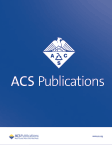摘要PO2-02-10:利用治疗前标准护理DCE-MRI预测保乳手术的可行性:乳腺癌手术规划的新型临床决策支持工具
IF 3.4
Q2 PUBLIC, ENVIRONMENTAL & OCCUPATIONAL HEALTH
引用次数: 0
摘要
背景:关于乳腺癌治疗方案的决策过程,特别是保乳手术(BCS)与乳房切除术的选择,是一个复杂而敏感的问题,需要考虑患者的偏好及其接受保乳手术的资格。一系列解剖学因素,如肿瘤大小、乳房大小和肿瘤与皮肤的接近程度,都会影响外科医生关于保乳手术还是乳房切除术的建议。对于肿瘤较大的患者来说,乳房切除术可能是唯一可行的选择,而对于肿瘤较小的患者来说,他们往往有机会与外科医生共同决定最合适的方法,以确保肿瘤治疗的成功,并尽量减少潜在的外观畸形。为了促进这一决策过程,我们开发了一种工具,能够根据标准护理成像患者数据,就乳房肿块切除术(BCS)或乳房切除术提供明智的建议。通过整合这些建议功能,我们旨在加强乳腺癌治疗的决策过程并改善患者的治疗效果。方法:为了帮助外科医生和患者确定患者是否有资格接受保乳手术(BCS),我们开发了 BCS 可行性评分。保乳手术可行性评分由二元分类器机器学习模型生成,代表了特定患者接受保乳手术的概率。该评分完全基于 TumorSight Viz 的输出结果,TumorSight Viz 是一个软件平台,仅使用治疗前的 T1 加权 DCE MRI,并应用一套深度学习算法来分割患者的疾病和周围的乳腺组织。从使用 TumorSight Viz 生成的多组织分割中,我们提取了 25 个空间形态特征,用于模型开发过程。训练集和测试集是一个公开可用数据集(Saha,et al,2018)的子样本。我们选择了接受 BCS 或乳房切除术,并具有可行的 T1 加权 DCE MRI 的患者。双侧病例被排除在外。训练/测试集共包括 n = 749 个病例,其中 363 个接受了乳房切除术,386 个接受了乳房肿块切除术。在进行模型训练之前,我们将样本的 20% 分割开来作为测试集。然后,我们在一系列预先设定的超参数范围内训练随机森林分类器,共使用 25 个特征作为输入,并在训练集中使用 5x 交叉验证。然后,我们仅在测试集中评估模型性能。结果在测试集中,76 个病例接受了乳房切除术,而 74 个病例接受了乳房切除术。在 76 个病例中,我们成功预测了 56 例 BCS(74%),在 74 个病例中,我们成功预测了 46 例乳房切除术(62%)。总体而言,我们观察到的 AUC = 0.76 和 F1 分数 = 0.66,表明模型的性能处于中等偏上水平。通过 SHAP 值衡量,模型中最重要的特征包括轴对齐的肿瘤最长尺寸(毫米)、肿瘤与乳头之间的最近距离(毫米)、肿瘤凸壳体积(毫升;单中心扩张)以及肿瘤凸壳体积与乳房体积之比。我们在由 579 个病例组成的完全独立的保留验证集中测试了该模型的性能。在这个验证集中,335 名患者接受了乳房肿块切除术,244 名患者接受了乳房切除术。我们成功预测了 335 例中 254 例(76%)的 BCS 和 244 例中 149 例(61%)的乳房切除术。总体而言,我们观察到的 AUC = 0.75 和 F1 分数 = 0.63。验证集的表现与测试集中观察到的结果一致,表明具有很强的普适性。在验证集中,将接受 BCS 的患者与接受乳房切除术的患者进行比较,我们观察到所有四个最具预测性的特征都存在显著差异。结论TumorSight Viz 和 BCS 可行性评分有助于为患者和临床医生提供信息和工具,帮助他们做出手术规划决策。引用格式:John Pfeiffer, Bradley Feiger, Anuja Antony, Joseph Peterson.使用治疗前标准 DCE-MRI 预测保乳手术的可行性:乳腺癌手术规划的新型临床决策支持工具 [摘要]。在:2023 年圣安东尼奥乳腺癌研讨会论文集;2023 年 12 月 5-9 日;德克萨斯州圣安东尼奥。费城(宾夕法尼亚州):AACR; Cancer Res 2024;84(9 Suppl):Abstract nr PO2-02-10.本文章由计算机程序翻译,如有差异,请以英文原文为准。
Abstract PO2-02-10: Predicting the feasibility of breast conserving surgery using pre-treatment standard of care DCE-MRI: a novel clinical decision support tool for breast cancer surgical planning
Background:
The decision-making process regarding breast cancer treatment options, specifically breast conserving surgery (BCS) versus mastectomy, is a complex and sensitive matter that takes into account the patient's preferences and their eligibility for BCS. A range of anatomical factors, such as tumor size, breast size, and proximity of the tumor to the skin, can influence the surgeon's recommendation regarding BCS or mastectomy. While mastectomy may be the only viable option for patients with large tumors, those with smaller tumors often have the opportunity to collaboratively decide with their surgeon on the most appropriate approach to ensure oncologic success and minimize potential cosmetic deformity. To facilitate this decision-making process, we developed a tool capable of providing informed recommendations on BCS or mastectomy based on standard of care imaging patient data. By integrating these recommendation capabilities, we aim to enhance the decision-making process and improve patient outcomes in breast cancer treatment.
Methods:
To assist surgeons and patients in determining a patient’s eligibility for breast conserving surgery (BCS), we developed the BCS Feasibility Score. The BCS Feasibility Score is generated from a binary classifier machine learning model and is representative of the probability that a given patient could receive BCS. The score is based solely on the output from TumorSight Viz, a software platform that uses only pre-treatment T1-weighted DCE MRI and applies a suite of deep learning algorithms to segment the patient’s disease and the surrounding breast tissues. From the multi-tissue segmentation generated using TumorSight Viz, we extracted 25 spatial morphology features to use in the model development process.
The training and testing sets were a subsample of a publicly available dataset (Saha, et al, 2018). We selected patients that received either BCS or mastectomy and had a viable T1-weighted DCE MRI. Bi-lateral cases were excluded. The total training/testing set consisted of n = 749 cases, 363 of which received mastectomy and 386 who received BCS. Before model training occurred, we split 20% of the sample to use as the test set. We then trained a random forest classifier across a range of pre-set hyper-parameters, using a total of 25 features as inputs, and using 5x cross-validation in the training set. We then assessed model performance in the testing set only.
Results:
In the test set, 76 cases received BCS versus 74 that received mastectomy. We successfully predicted BCS in 56 out of 76 cases (74%), and mastectomy in 46 out of 74 cases (62%). Overall, we observed an AUC = 0.76 and an F1 score = 0.66, indicating moderate to strong model performance. The most important features in the model, as measured by SHAP values, included the axis aligned tumor longest dimension (mm), the closest distance between the tumor and the nipple (mm), the volume of the tumor convex hull (mL; dilated uni-centrically), and the ratio of tumor convex hull volume to breast volume.
We tested the model’s performance in a fully independent holdout validation set of 579 cases. Within this validation set, 335 patients received BCS versus 244 received mastectomy. We successfully predicted BCS in 254 out of 335 cases (76%), and mastectomy in 149 out of 244 cases (61%). Overall, we observed an AUC = 0.75 and an F1 score = 0.63. Validation set performance mirrored results observed in the test set, indicating strong generalizability. In the validation set, comparing patients who underwent BCS to those who underwent mastectomy, we observed significant differences across all four of the most predictive features.
Conclusion:
TumorSight Viz and the BCS Feasibility Score help empower both patients and clinicians with information and tools to facilitate surgical planning decisions.
Citation Format: John Pfeiffer, Bradley Feiger, Anuja Antony, Joseph Peterson. Predicting the feasibility of breast conserving surgery using pre-treatment standard of care DCE-MRI: a novel clinical decision support tool for breast cancer surgical planning [abstract]. In: Proceedings of the 2023 San Antonio Breast Cancer Symposium; 2023 Dec 5-9; San Antonio, TX. Philadelphia (PA): AACR; Cancer Res 2024;84(9 Suppl):Abstract nr PO2-02-10.
求助全文
通过发布文献求助,成功后即可免费获取论文全文。
去求助
来源期刊

ACS Chemical Health & Safety
PUBLIC, ENVIRONMENTAL & OCCUPATIONAL HEALTH-
CiteScore
3.10
自引率
20.00%
发文量
63
期刊介绍:
The Journal of Chemical Health and Safety focuses on news, information, and ideas relating to issues and advances in chemical health and safety. The Journal of Chemical Health and Safety covers up-to-the minute, in-depth views of safety issues ranging from OSHA and EPA regulations to the safe handling of hazardous waste, from the latest innovations in effective chemical hygiene practices to the courts'' most recent rulings on safety-related lawsuits. The Journal of Chemical Health and Safety presents real-world information that health, safety and environmental professionals and others responsible for the safety of their workplaces can put to use right away, identifying potential and developing safety concerns before they do real harm.
 求助内容:
求助内容: 应助结果提醒方式:
应助结果提醒方式:


